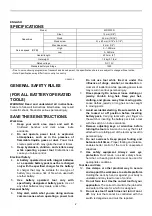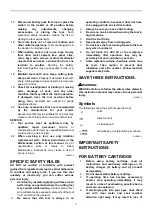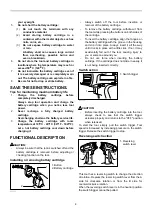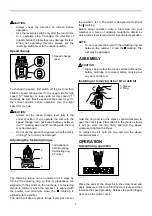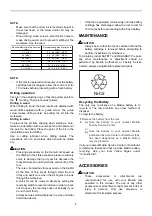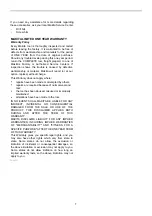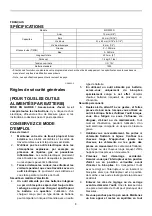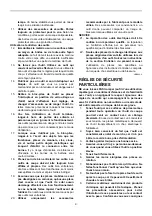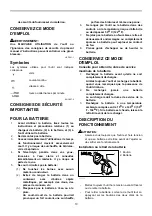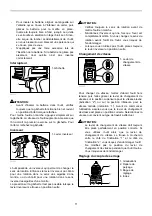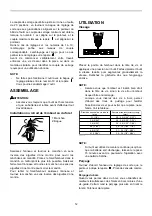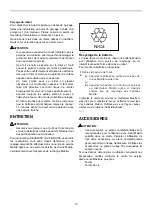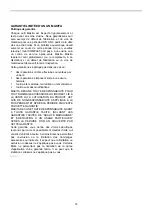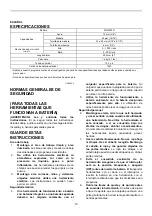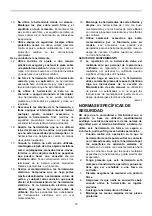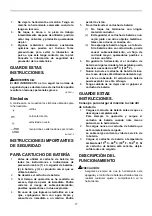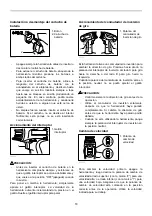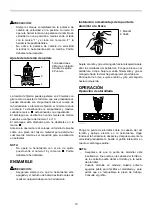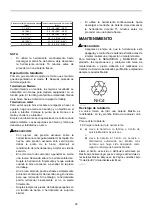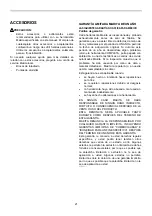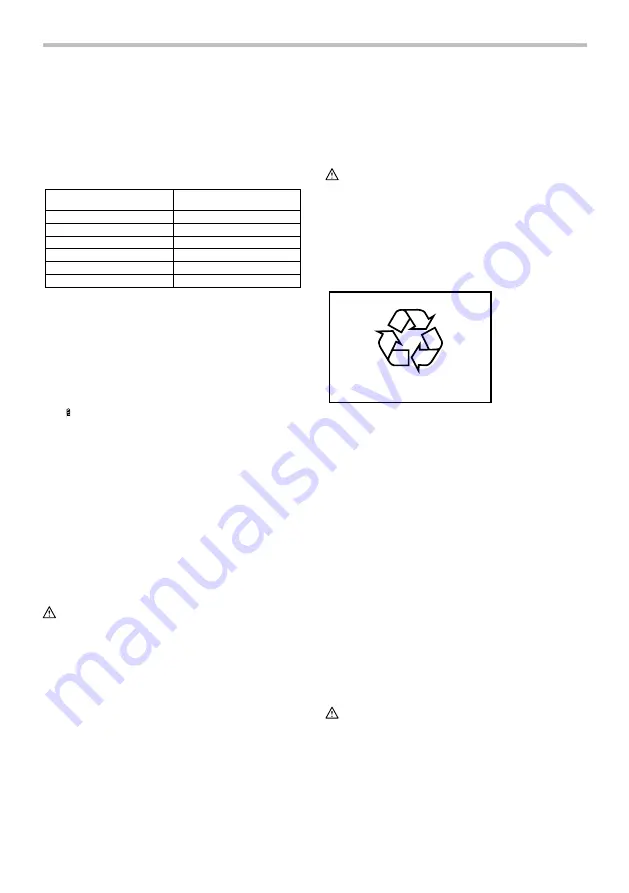
6
NOTE:
•
Make sure that the driver bit is inserted straight in
the screw head, or the screw and/or bit may be
damaged.
•
When driving wood screws, predrill pilot holes to
make driving easier and to prevent splitting of the
workpiece. See the chart.
3.1 (1/8”)
3.5 (9/64”)
3.8 (5/32”)
4.5 (11/64”)
4.8 (3/16”)
5.1 (13/64”)
2.0 - 2.2 (5/64” - 3/32”)
2.2 - 2.5 (3/32” - 3/32”)
2.5 - 2.8 (3/32” - 7/64”)
2.9 - 3.2 (7/64” - 1/8”)
3.1 - 3.4 (1/8” - 9/64”)
3.3 - 3.6 (1/8” - 9/64”)
Nominal diameter of wood screw
(mm)
Recommended size of pilot hole
(mm)
002379
NOTE:
•
If the tool is operated continuously until the battery
cartridge has discharged, allow the tool to rest for
15 minutes before proceeding with a fresh battery.
Drilling operation
First, turn the adjusting ring so that the pointer points to
the
marking. Then proceed as follows.
Drilling in wood
When drilling in wood, the best results are obtained with
wood drills equipped with a guide screw. The guide
screw makes drilling easier by pulling the bit into the
workpiece.
Drilling in metal
To prevent the bit from slipping when starting a hole,
make an indentation with a center-punch and hammer at
the point to be drilled. Place the point of the bit in the
indentation and start drilling.
Use a cutting lubricant when drilling metals. The
exceptions are iron and brass which should be drilled
dry.
CAUTION:
•
Pressing excessively on the tool will not speed up
the drilling. In fact, this excessive pressure will only
serve to damage the tip of your bit, decrease the
tool performance and shorten the service life of the
tool.
•
There is a tremendous force exerted on the tool/bit
at the time of hole break through. Hold the tool
firmly and exert care when the bit begins to break
through the workpiece.
•
A stuck bit can be removed simply by setting the
reversing switch to reverse rotation in order to back
out. However, the tool may back out abruptly if you
do not hold it firmly.
•
Always secure small workpieces in a vise or similar
hold-down device.
•
If the tool is operated continuously until the battery
cartridge has discharged, allow the tool to rest for
15 minutes before proceeding with a fresh battery.
MAINTENANCE
CAUTION:
•
Always be sure that the tool is switched off and the
battery cartridge is removed before attempting to
perform inspection or maintenance.
To maintain product SAFETY and RELIABILITY, repairs,
any other maintenance or adjustment should be
performed by Makita Authorized or Factory Service
Centers, always using Makita replacement parts.
Call your nearest Makita Service Center or Distributor
to determine thelocation that provides Makita battery
recycling. See your local Yellow Pages under
"Tools-Electric".
Recycling the Battery
The only way to dispose of a Makita battery is to
recycle it. The law prohibits any other method of
disposal.
To recycle the battery:
Remove the battery from the tool.
Take the battery to your nearest Makita
Factory Service Center
Take the battery to your nearest Makita
Authorized Service Center or Distributor that
has been designated as a Makita battery
recycling location.
a)
or
b)
1.
2.
000005
Ni-Cd
EN0001-1
ACCESSORIES
CAUTION:
•
These accessories or attachments are
recommended for use with your Makita tool
specified in this manual. The use of any other
accessories or attachments might present a risk of
injury to persons. Only use accessory or
attachment for its stated purpose.


